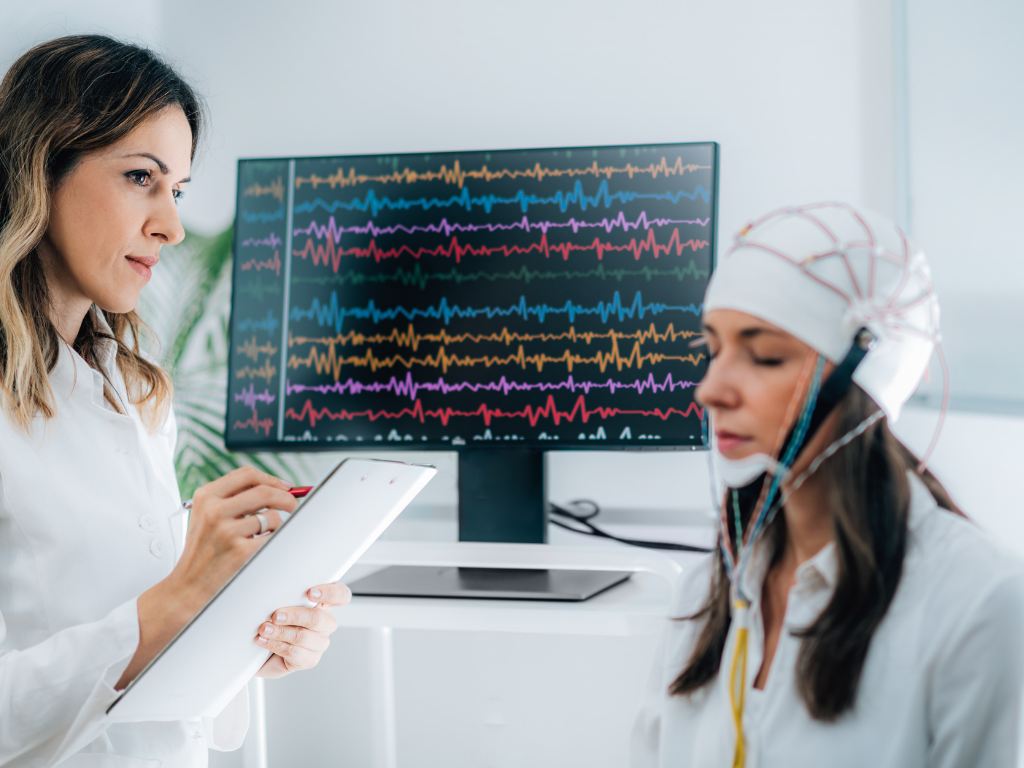
We help find the root cause of your issues.
What are event related potentials (ERPs)?
Whenever we hear or see something, our brain has an electrical response to it called an event related potential, or ERP. How fast a person’s brain notices the responds to the stimulus and in what area of the brain can let us see the strengths and weaknesses a person is working with.
Adding onto the qEEG, which is done first, gives us a deeper understanding of what is going on from a neural level. ERPs are scientifically sound and can be used to find out more information to add to what was found in the qEEG. ERPs can show changes faster than the EEG as a person improves, because of this, ERPs are great markers to track process, especially in the beginning of training, when differences are more subtle.
How can this be used?
This can be used to see how fast your brain is responding to stimuli. It measures the time it takes your brain to respond to a stimulus from each of the 19 sensors. This lets us see how certain areas of your brain are either responding, or not, to events. This gives a better insight into a person’s daily struggles and strengths.
What does it look like for getting an ERP?
Check out “what does it look like for getting a qEEG” as it will start exactly that way. After gathering the qEEG, you will have a computer mouse given to you to use in your dominant hand. A series of test that are either visual or auditory. For visual there may be a picture of 2 images, when you see both images be the same thing, you click the mouse. For auditory, you may click the mouse when you hear an odd tone. These will continue for a set time, usually around 20 minutes. Afterwards, just as in the qEEG, you will be cleaned up after all the data is collected.



